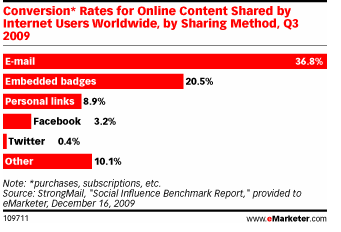This article was written by Mark Steven Bosko, an industry expert with over fifteen years of experience in producing, promoting, and distributing independent feature films. In addition to performing virtually every job on a film production, he has successfully produced and distributed several independent films. Mark is the author of The Complete Independent Movie Marketing Handbook, a comprehensive guide on how to promote, distribute, and sell your film or video.
PROMOTION
It is not simply enough these days to just make a great film. Obviously, putting together a quality film–with regard to production value, talent, and script–is probably the biggest hurdle to overcome in the process of filmmaking. But when you seek out distribution, either via a traditional deal or through a self-fulfilled effort, you’re going to need more than a master tape with stunning images, clean audio, and a good story to secure a deal.
There are a slew of promotional and technical concerns that must be addressed, as well as a long list of deliverables that are vital to closing even the smallest sale.
PROMOTIONAL ELEMENTS
Whether you are self-distributing your first flick or signing with a mini-major to open your film in a limited theatrical release, promoting the film to its target markets is an obligatory part of the process, and, to do this right, specific materials are necessary.
First and foremost is the screener. A screener is a full-length promotional copy of your project, provided free to potential buyers, the media, and film festivals. Those expressing interest in your film want to witness first-hand how you assembled talent, writing, effects, camera work, and budget into a (hopefully) saleable product.
It’s time for your film to live up to the expectations you have created for it through the materials in the media kit and in any previous phone conversations. DVD copies for solicitation purposes should be the best quality you can find and afford. It is not wise to try and save a few bucks at this point by creating cheap, inferior-quality screening dubs.
Nothing will cause a distributor, media reviewer, or festival staff member to lose interest quicker than a DVD that will not play on their machine or is plagued with digital breakup. This is your one shot to look your best. Make it count.
You’re lucky. Just a few years ago, filmmakers had to find the time, expertise, and (usually lots of) money to create a professional DVD that could compete on the shelf with Hollywood product. These days, CreateSpace makes preparing your movie on DVD for its various markets a very simple–and inexpensive–procedure.
You also don’t need to break the bank making artwork for your DVD. A competent job that helps to highlight your film’s key element–its hook–and some basic information on the back of the jacket (genre, short description, running time, awards, master format, etc.) is just what you need for soliciting traditional distributors, according to Tom Emma, president of Reliant Digital Media and former American Film Marketing Association executive.
Filmmakers should use professional-looking materials to package the screener. Be sure that the project title, your name, contact phone, and e-mail are clearly marked on both the exterior package and the DVD itself. Screeners have a mysterious way of moving about, especially in an over-solicited distributor’s office.
For those filmmakers journeying the self-distribution route, a screener will more likely be the same as the final product, and so a bit more care should be taken. If you are selling direct to consumers, video stores, libraries, and other customers, and submitting your film to various media for those kind of reviews that feature a shot of the DVD case, you’ll want to create “finished goods,” which means creating a four-color DVD package to encase your product. Here are some ways you can make the most of your DVD packaging.
As a self-distributing filmmaker, it is also very important to think of your other “packages”–your website and other online promotion tools, your sales page, postcards, etc.,–when doing design. Buyers may not see your film until after they purchase, so having a great looking website, sales page, and supporting materials is critical.
For self-distribution, the package, website, and key art should be further developed. Key art should represent the project’s single most promotable element. For example, the key art for our production Killer Nerd was an image of the nerd in front of a blood-spattered wall, along with the tagline, “This nerd is really out for revenge.” Our film Pig was represented by a photo of the lone police officer, standing next to his cruiser in the middle of a deserted country highway. Both images quickly “told” the story of their respective films. Single images work best, as a cluster or grouping of images is confusing and distracts attention from any one theme, unless your movie features two or three well-known actors. The “floating head” design is very popular as key art with studio releases.
Thanks to desktop publishing, professional-quality art doesn’t have to dent your budget. (I’ve bartered art fees in exchange for advertising the artist’s name on all promotional materials). Freelance artists are everywhere, and will be glad for the work if you promise to throw their name around and give them a copy of the finished product.
Bottom-line: Don’t cheap out here and do it yourself, unless you are a trained designer. Graphic services are inexpensive today. Take the time and expense to make sure your project looks its best.
Next Up on Promotional Needs: PRODUCTION STILLS
Not behind-the-scenes photos, but actual shots that look as if they are a still-frame from the film. The old saying, “a picture is worth a thousand words,” never holds truer than when you are talking to busy acquisition agents. Though the rest of the materials (film fact sheets, reviews, and media coverage) in a solicitation package are appreciated, your available photos are one of the best ways to convince a distributor that your film is ready for market.
Behind-the-scenes photos are fun, but worthless except for some possible media use. It’s the production stills that count. You’ll need plenty of good quality photographs to close any distribution deal, sometimes 25-30 or more for foreign sales. If you haven’t yet shot your project, keep this in mind.
THE MEDIA PACKAGE
Other promotional elements that will facilitate your film’s entry and acceptance to its various markets and audiences, and should be included in a solicitation or media package, can include:
- Synopsis – Both a short and long description of your movie’s storyline.
- Project fact sheet – Format, length, genre.
- Cast and crew lists – A complete listing of notable talent with prior credits.
- Company background – Pertinent details on your production company.
- Reviews – Complimentary remarks received from the media.
“All of these details add interest to any new solicitation. After we watch a screener, any producer approaching us that we know has a complete package of promotable elements makes our job easier in the long run. It doesn’t guarantee a deal, but a good film supported by positive reviews and the evidence that the producer has done his homework, and is able to come up with the deliverables, always has a better chance.”
–Arik Ben Treston, Vice President, Home Entertainment, Cinema Libre Studios
OTHER DELIVERABLES FOR SELF AND TRADITIONAL DISTRIBUTION
Deliverables are what a filmmaker needs to give the distributor or buyer to make the sales contract effective. This is your end of the deal. It’s more of a burden for those entering into studio-backed arrangements, where the legalities of the business are very specific, but even a supposedly-simple, self-distributed home video deal can find you searching old files and spending some money. In ascending order from cheap-and-easy to costly-and-time-consuming, be prepared to ante up any or all of the following:
- A copy of the shooting and/or production script- Some distributors may want the shooting script; some will want the production script.
- Dialogue sheets- Necessary for foreign sales, a word-for-word transcription of all the spoken language (dialogue and voice-over) as it appears in the final version of your film.
- Music cue sheet- A listing of each music cue used throughout the project, with accompanying song titles, duration of the cue in minutes (in tenths of seconds), artists performing the music, and publishers (BMI, ASCAP). Music cue sheets are necessary for television sales, as broadcasters and cablecasters maintain licensing deals with the music publishing companies to pay royalty use rights.
- Trailer- Hopefully you’ve created one for promotional purposes before this point.
- Production stills- As discussed previously.
- Poster, one-sheet, postcards and other marketing materials- This is very dependent on the kind of deal you are entering or the type of self-promotion you are planning. Those signing with studios and large independent distributors won’t need these items. Small, direct-to-video and English-speaking foreign buyers may stipulate such materials as necessary to the agreement. If you plan on self-distributing, be well prepared with these items as they are essential to your marketing and promotional plan.
- M&E tracks- Music and effects tracks involve separating every single sound effect and music cue on an audio track from the dialogue in a production. This is used in foreign sales, when your dialogue will be dubbed into another language.
- Copyright- Most independent films are uniquely created, and thus the sole property of their creators. If that’s the case, be sure you properly register your film with the U.S. Copyright Office.
- Clearances/releases/insurance- You’ll need releases, errors and omissions insurance, contracts for use, and clearances from everyone and everything that appears in your film. From the strip mall parking lot that served as a set to your Uncle Louie who played a character, to the local band that provided background music, get signed agreements stating your intentions to promote and sell (and profit from) the movie. “This is essential,” says Emma. “A film cannot ultimately be distributed without proper clearances.” Though errors and omissions insurance is not an immediate concern, filmmakers should budget for the expense at the outset of the production. Have an attorney (preferably one familiar with entertainment law) check out everything to be sure it’s kosher.
SUMMARY
- Today, it is not simply enough to just make a great film.
- You need to have quality promotional materials.
- The most important is your screener.
- A media package is important. Generally you should use it to follow up after a distributor has reviewed and expressed interest in your film.
- If you’re at all serious, make sure to get all of your rights to the film, production stills, and other materials used during production cleared. Without rights, even the best-made film can’t be sold.
FINAL THOUGHTS
Getting your film prepped and ready for its markets takes some planning and time, but the work is worth the effort when a deal is sealed thanks to having “all the pieces” in place.
___________________________________________________________________
Unified Manufacturing is an L.A. -based one-stop-shop that offers very affordable CD/DVD/USB replication, custom printing, promotional products, warehousing and fulfillment and many more. If you need an Instant Quote on a project and you want FREE SHIPPING, simply CLICK HERE.




